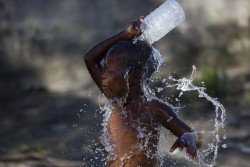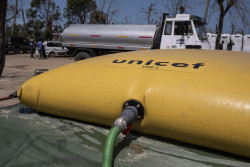メニュー 閉じる
- TOP
- はじめてのかたへ
- よくあるご質問/お問合せ
-
ユニセフについて
-
世界の子どもたちを知る
-
ユニセフハウス展示見学
- 協定地域組織(地域における活動)
- イベント一覧
- お知らせ一覧
- ご支援者(個人)の皆様へ
ユニセフについて
世界の子どもたちを知る
ユニセフハウス展示見学
 寄付方法のご案内
寄付方法のご案内
 ご寄付による支援例・成果
ご寄付による支援例・成果
 領収書
領収書
 その他のご協力方法
その他のご協力方法
 個人のみなさま
個人のみなさま
 学校・園のみなさま
学校・園のみなさま
 大学生ボランティア
大学生ボランティア
【2019年4月2日 東京発】
本資料は、日本時間2019年4月1日までに、ユニセフ(国連児童基金)現地事務所などから寄せられた報告を、日本ユニセフ協会広報室でまとめたものです。
* * *
 |
|
© UNICEF/UN0291858/Prinsloo |
|
被害を受けたベイラ市で、汚れた水で身体を洗う子ども。(2019年3月24日撮影) |
 |
|
© UNICEF/UN0294248/DE WET |
|
ユニセフは被災者が滞在するキャンプで安全な水を提供している。(2019年3月28日撮影) |
【関連ページ】
シェアする
